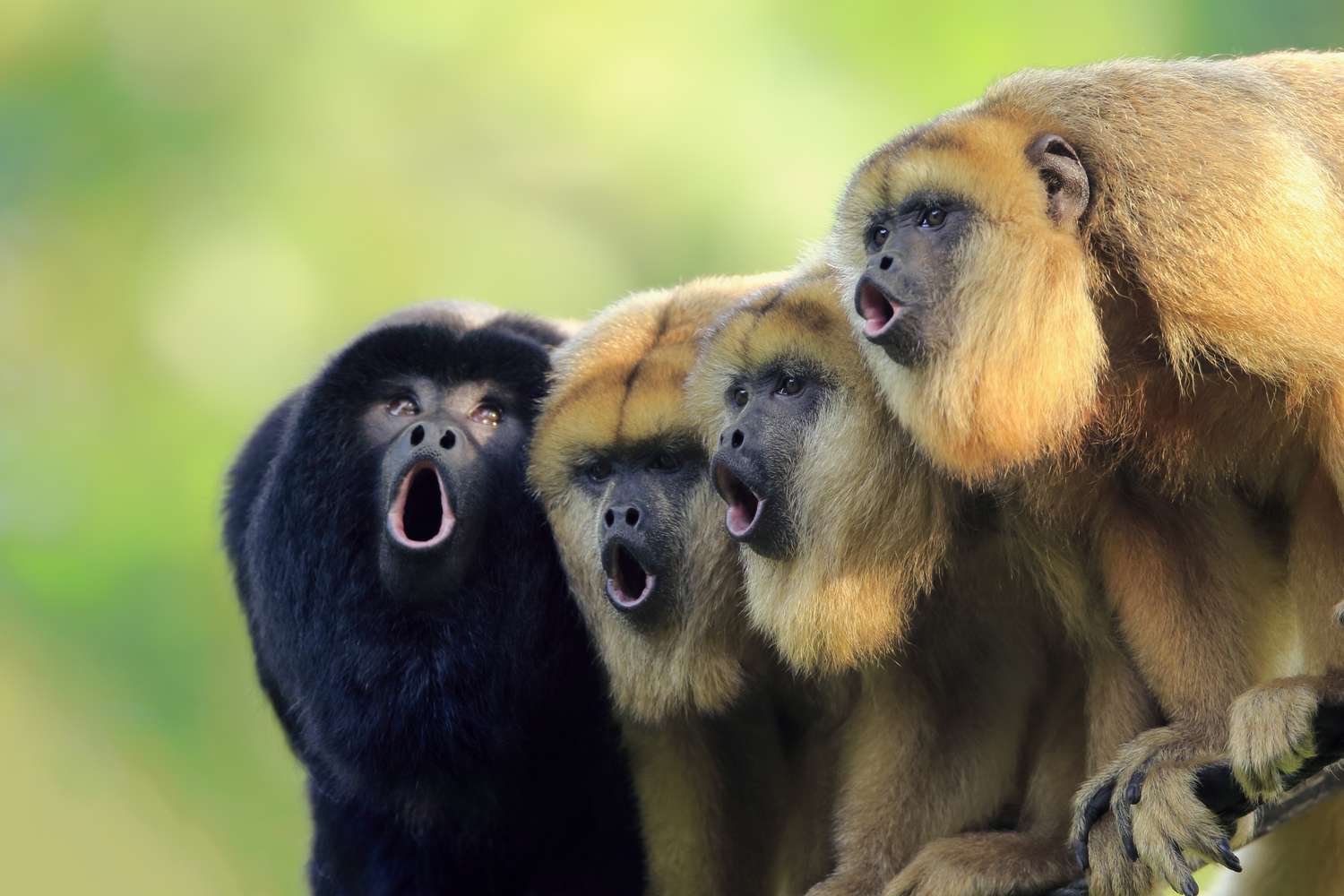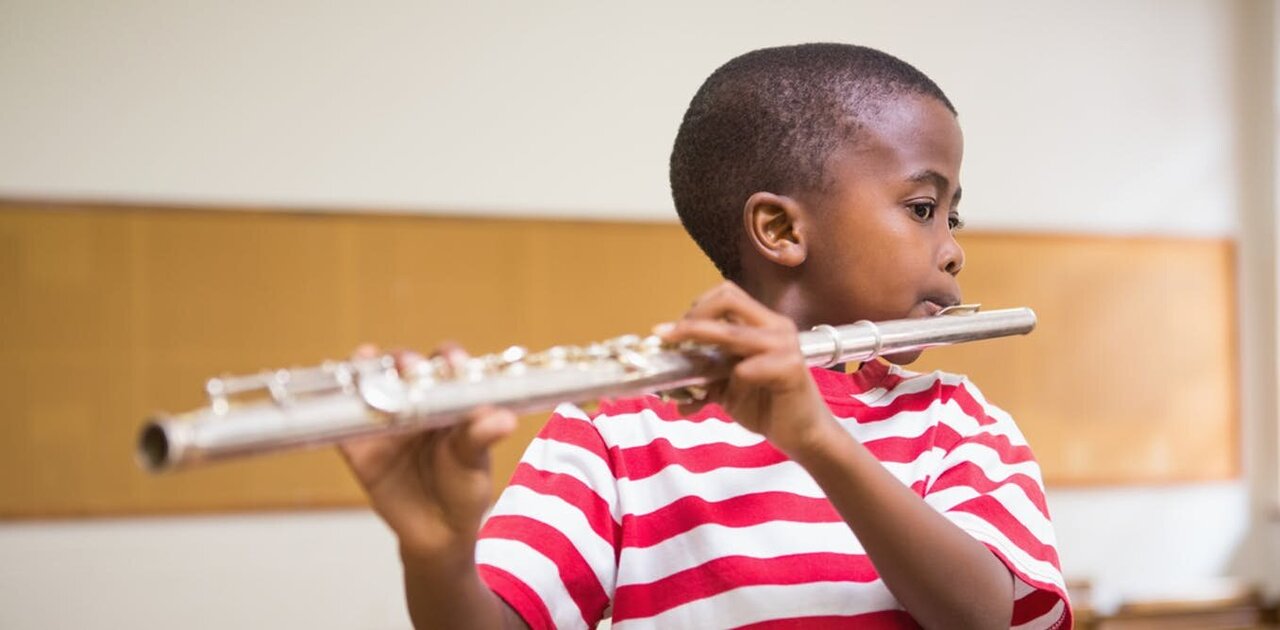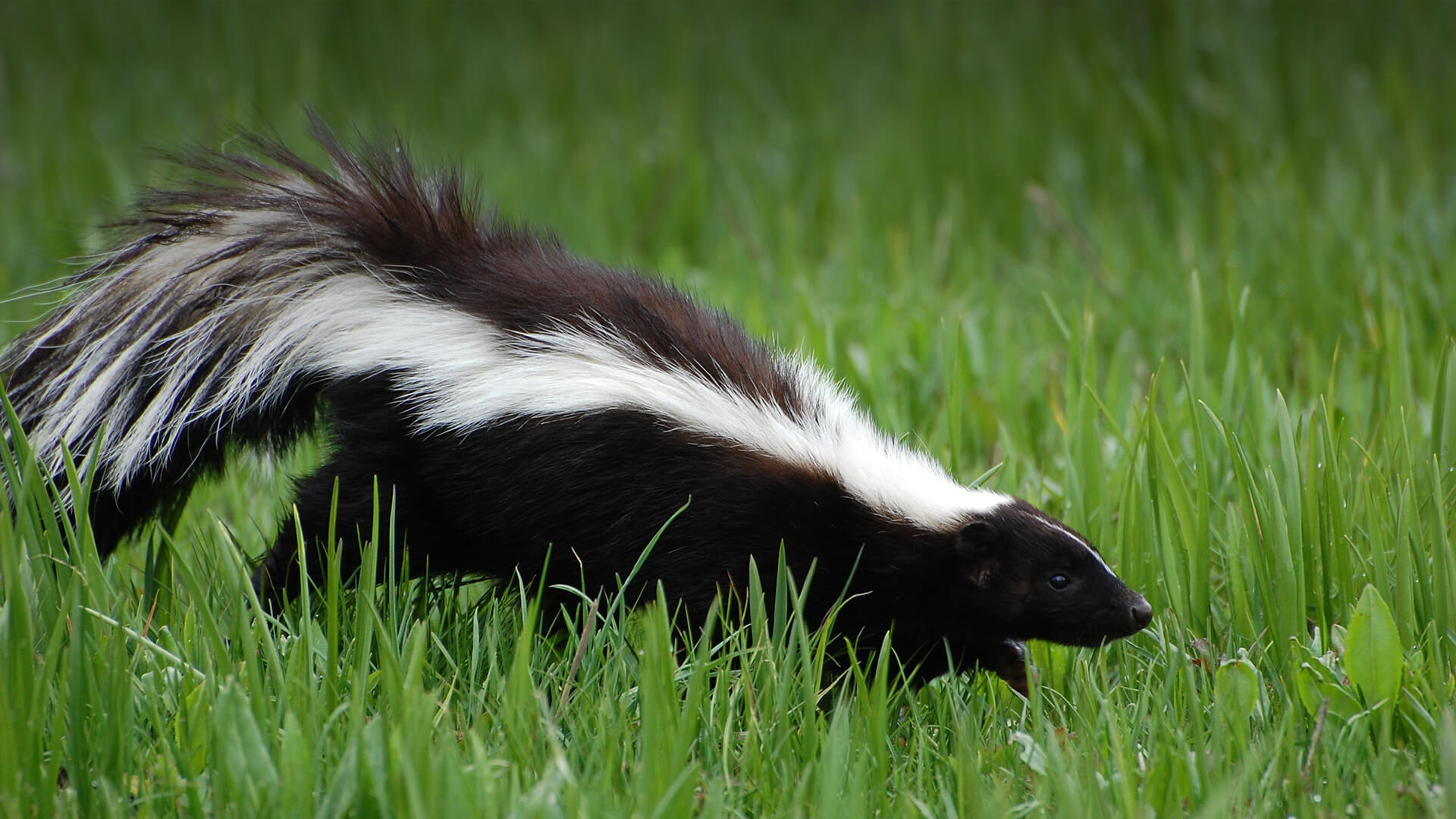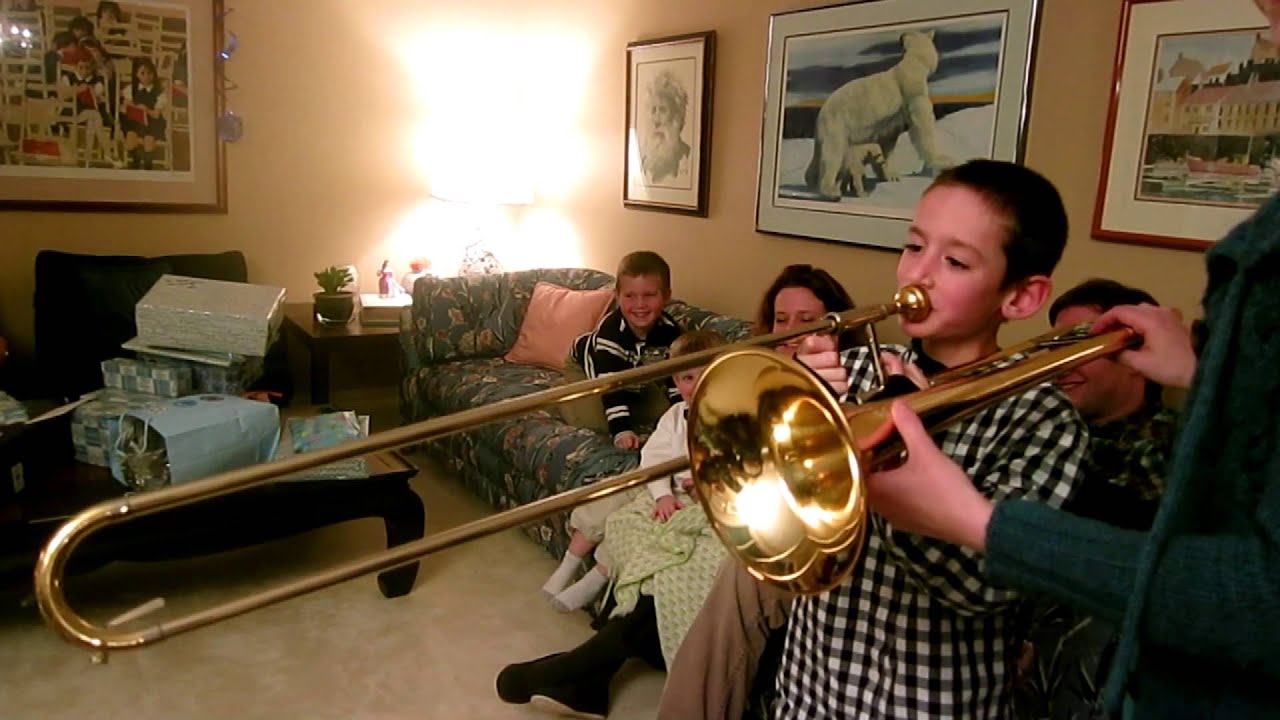Home>Production & Technology>Sound>What Do Howler Monkeys Sound Like


Sound
What Do Howler Monkeys Sound Like
Published: October 25, 2023
Discover the mesmerizing sounds of howler monkeys and learn about their unique vocalizations. Immerse yourself in the captivating world of these incredible creatures and their remarkable ability to communicate through sound.
(Many of the links in this article redirect to a specific reviewed product. Your purchase of these products through affiliate links helps to generate commission for AudioLover.com, at no extra cost. Learn more)
Table of Contents
Introduction
Howler monkeys are fascinating creatures known for their powerful and distinct vocalizations. These primates are native to the dense rainforests of Central and South America, where their unique calls can be heard echoing through the treetops. The sounds produced by howler monkeys can range from deep rumbling roars to eerie cries that carry for miles.
In addition to being one of the loudest animals on the planet, howler monkeys are also recognized for their large size, with some species weighing up to 22 pounds and having a body length of up to 3 feet. They have prehensile tails that they use for brachiation – swinging from branch to branch – and are primarily arboreal animals, spending most of their time high up in the trees.
The vocalizations of howler monkeys serve several important purposes, including territorial defense, communication between groups, and mate attraction. These calls can be heard from the early morning hours until dusk, echoing through the forest and providing a unique auditory experience for those fortunate enough to witness it.
In this article, we will delve into the mesmerizing world of howler monkey vocalizations. We will explore the different types of calls they produce, the factors influencing these vocalizations, the functions they serve in the social dynamics of howler monkey groups, and the fascinating research conducted to better understand these sounds.
So sit back, relax, and prepare to embark on an auditory journey into the captivating realm of howler monkey vocalizations.
Description of Howler Monkeys
Howler monkeys are large, robust primates belonging to the family Atelidae. They are known for their distinctive features, including a stocky build, a wide face, and a prehensile tail. They have a specialized hyoid bone in their throat that amplifies their vocalizations, allowing them to produce some of the loudest sounds in the animal kingdom.
There are nine recognized species of howler monkeys, including the mantled howler, red howler, black howler, and brown howler, each with its own unique characteristics and geographical distribution. These species can be found in various habitats, such as rainforests, mangroves, and cloud forests, across Central and South America.
Howler monkeys are primarily herbivorous, feeding on a diet of leaves, fruits, flowers, and even some insects. Their large size and specialized digestive system allow them to efficiently extract nutrients from the vegetation they consume. They have a complex stomach structure that enables them to ferment plant matter, breaking down tough fibers and extracting as much nutrition as possible.
These primates are highly social animals, living in troops composed of several individuals, including adult males, adult females, and their offspring. The size of these groups can vary from a few individuals to over 20, depending on the species and the availability of resources in their habitat. Within these troops, there is a hierarchical structure, with dominant males leading the group and maintaining territory boundaries.
Overall, howler monkeys are fascinating creatures with unique adaptations for their arboreal lifestyle and impressive vocalizations. Their physical characteristics and social dynamics contribute to their importance in maintaining the biodiversity of the ecosystems in which they reside.
Vocalizations of Howler Monkeys
The vocalizations of howler monkeys are one of their most distinguishing features. These primates have evolved a specialized vocal apparatus that allows them to produce deep and resonant calls that can be heard over long distances. Male howler monkeys, in particular, are known for their loud and distinctive vocalizations, which serve multiple purposes within their social groups.
The primary function of howler monkey vocalizations is to establish and maintain territory boundaries. The deep, guttural roars they produce travel far through the dense forest, effectively signaling their presence and warding off potential intruders. By vocalizing, howler monkeys are able to communicate and defend their resources, including food sources and mating opportunities.
Additionally, howler monkey vocalizations play a crucial role in intragroup communication. Members of a troop use a variety of calls to coordinate their movements, signal danger, and maintain social cohesion. These calls can range from soft grunts and murmurs to loud howls and barks, depending on the specific situation or message that needs to be conveyed.
Male howler monkeys, especially during the mating season, produce elaborate and distinctive calls to attract females and assert their dominance over other males. These calls can be heard reverberating through the forest and serve as an advertisement of their reproductive fitness. The richness and complexity of a male’s vocalizations can influence his success in attracting mates and siring offspring.
It is important to note that while male howler monkeys are known for their vocal prowess, females also contribute to the group’s vocalizations. They emit softer and shorter calls, often in response to the males’ vocalizations or as a means of communication among group members. The collective vocal repertoire of howler monkeys creates a symphony of sounds that is unique to each social group.
Overall, the vocalizations of howler monkeys are a vital component of their social behavior and communication. Their ability to produce loud and resonant calls allows them to establish territory boundaries, communicate within their troop, and attract mates. These vocalizations are an integral part of the rich tapestry of sounds that fill the rainforests of Central and South America where howler monkeys call home.
Types of Howler Monkey Calls
Howler monkeys have a diverse repertoire of vocalizations, each serving a specific purpose within their social dynamics. These calls can vary in pitch, duration, and intensity, allowing them to convey different messages to other members of their troop or neighboring groups. Let’s explore some of the key types of howler monkey calls:
- Roars: Roaring is the most iconic and well-known call of howler monkeys. These deep and resonant calls can carry for up to three miles through the dense forest. Roars are typically produced by male howlers as a means of advertising their presence and establishing territory boundaries. The intensity and duration of these roars can help indicate the size and strength of a male to potential rivals.
- Grunts and Growls: Howler monkeys also produce a range of shorter, lower-pitched calls, including grunts and growls. These calls are used for intra-group communication, signaling cooperation or coordination among group members. Grunts and growls can convey different meanings depending on the context, such as alerting others to the presence of predators or coordinating movements within the trees.
- Barks: Barking calls are high-pitched vocalizations produced by both male and female howler monkeys. These sharp and staccato-like calls are often used as an alarm signal to alert other group members of potential danger. Barks can also serve as a means of communication during aggressive encounters or territorial disputes, acting as a warning to potential adversaries.
- Murmurs: Murmurs are soft and low-pitched vocalizations that are typically emitted by female howler monkeys. These calls are often used as a response to the vocalizations of the males or as a means of non-aggressive communication within the troop. Murmurs convey a sense of cohesion and social bonding, helping to maintain the unity of the group.
These are just a few examples of the diverse vocal repertoire of howler monkeys. Each call serves a specific purpose, whether it’s establishing territory, coordinating movements, alerting to danger, or maintaining social bonds. The combination of these different calls creates a complex and fascinating language in the treetops, allowing howler monkeys to communicate effectively within their social groups and with neighboring troops.
Factors Influencing Howler Monkey Vocalizations
Several factors influence the vocalizations of howler monkeys, shaping the frequency, duration, and intensity of their calls. These factors are intricately linked to the social dynamics, ecological conditions, and physiological characteristics of these primates. Let’s explore some of the key factors that influence howler monkey vocalizations:
- Sex and Age: Male howler monkeys are known for their powerful and far-reaching vocalizations, while females produce softer and shorter calls. This sexual dimorphism in vocalizations is attributed to the larger size and physical adaptations of males. Age also plays a role, as younger males may have less developed vocalizations compared to adult males who have reached sexual maturity.
- Reproductive Status: The reproductive cycle of howler monkeys can influence the intensity and frequency of their vocalizations. During the mating season, males produce elaborate calls to attract females and assert dominance over rival males. The level of competition for mates and the presence of receptive females in the group can influence the intensity and frequency of these calls.
- Environmental Conditions: Environmental factors such as the presence of potential predators, availability of food resources, and the density of neighboring howler monkey groups can affect vocalizations. When faced with the threat of predators, howler monkeys may produce alarm calls or increase the frequency and intensity of their vocalizations to warn and coordinate the group. Similarly, the abundance or scarcity of food resources can influence the frequency and intensity of calls related to foraging and communication within the group.
- Social Dynamics: The structure and dynamics of a howler monkey group can also impact their vocalizations. The presence of a dominant male in the group may result in more vocalizations as he asserts his authority and maintains territory boundaries. Interactions between different individuals within the group, such as conflicts or social bonding, can influence the frequency and type of vocalizations produced.
- Time of Day: Howler monkey vocalizations are most commonly heard during the early morning and late afternoon when they are most active. The intensity and frequency of calls can vary depending on the time of day, with more vocalizations occurring during the peak activity periods. This pattern is believed to be influenced by factors such as feeding patterns, social interactions, and territorial defense strategies.
These various factors work together to shape the vocalizations of howler monkeys, allowing them to communicate and navigate their social and ecological environments effectively. By understanding the influences on their vocalizations, researchers gain insights into the behaviors and adaptations of these fascinating primates.
Functions of Howler Monkey Calls
The vocalizations of howler monkeys serve several important functions within their social groups and ecological contexts. These calls play a vital role in howler monkey communication, helping to establish territories, coordinate movements, maintain social bonds, and attract mates. Let’s delve into the key functions of howler monkey calls:
- Territorial Defense: One of the primary functions of howler monkey calls is to establish and defend territory boundaries. Male howlers produce deep, resonant roars that can carry for miles through the forest. These vocalizations serve as a warning to neighboring groups, signaling the presence of a strong and dominant male defending his territory and resources.
- Mate Attraction and Reproductive Success: Male howler monkeys use their vocalizations to attract females during the mating season. They produce elaborate and distinctive calls to advertise their reproductive fitness and dominance. The quality and complexity of their vocalizations can influence their success in attracting mates and siring offspring, contributing to their reproductive success.
- Intragroup Communication and Coordination: Howler monkey calls facilitate communication and coordination within their social groups. They emit grunts, growls, and other vocalizations to signal cooperation, coordinate movements, or alert others to potential dangers. These calls help maintain the unity of the troop and foster social bonding among group members.
- Warning Signals: Howler monkeys use their vocalizations as warning signals to alert other group members of potential threats. Barking calls, for example, are high-pitched vocalizations produced in response to the presence of predators or other sources of danger. These alarm calls help the group stay vigilant and coordinate defensive responses.
- Territorial Negotiation: Howler monkey calls also play a role in territorial negotiation between neighboring groups. When two groups come into contact, their vocalizations can act as a means of communication, signaling the presence and boundaries of each group. The intensity, duration, and frequency of vocalizations can convey information about the strength and determination of each group, contributing to territorial negotiations.
Overall, the vocalizations of howler monkeys serve various functions that are crucial for their survival and reproductive success. These calls establish territories, attract mates, coordinate group movements, warn of danger, and negotiate the boundaries between neighboring groups. The intricate and diverse vocal repertoire of howler monkeys is a testament to their social complexity and adaptation to their natural environment.
Research on Howler Monkey Vocalizations
Scientists have been conducting extensive research to better understand the complexities of howler monkey vocalizations. Through field observations, acoustic analyses, and behavioral studies, researchers have made significant discoveries about the functions, meanings, and evolutionary significance of these unique calls.
One area of research focuses on the acoustic properties of howler monkey vocalizations. Scientists use specialized equipment to record and analyze the calls to determine their pitch, duration, frequency modulation, and intensity. These acoustic analyses help researchers identify individual vocal signatures within a group, study variations between populations, and better understand the complex vocal communication systems of these primates.
Another area of interest is the role of vocalizations in social dynamics and territorial behavior. Researchers study the interactions between different individuals within a group, as well as conflicts and negotiations between neighboring troops. By analyzing vocalizations during these interactions, scientists gain insights into the hierarchical structure, territorial defense strategies, and reproductive dynamics of howler monkeys.
Research has also explored the evolutionary significance of howler monkey vocalizations. By comparing the vocalizations of different species and analyzing their genetic relationships, researchers can reconstruct the evolutionary history of these vocalizations. This research sheds light on the role of vocal communication in the evolution of social behaviors, group dynamics, and mate selection among howler monkeys.
Furthermore, advancements in technology have allowed researchers to study howler monkey vocalizations in a non-invasive manner. Bioacoustic monitoring, for example, involves the use of remote recording devices placed in the habitat of howler monkeys. This enables researchers to collect data over long periods, providing valuable insights into daily vocal patterns, seasonal variations, and responses to environmental factors.
Research on howler monkey vocalizations has also expanded to examine the potential impacts of human activities, such as deforestation and habitat fragmentation, on their vocal behaviors. Understanding how these primates adapt and respond to changes in their habitat can inform conservation efforts aimed at protecting their populations and preserving their unique vocal communication systems.
Through ongoing research, scientists continue to unravel the mysteries behind howler monkey vocalizations, deepening our understanding of their behavior, ecology, and evolutionary history. These studies contribute to our appreciation of the incredible complexity and importance of vocal communication in primate social interactions and the intricate ecosystems in which howler monkeys thrive.
Conclusion
Howler monkey vocalizations are an integral part of their social behavior, communication, and survival in the rainforests of Central and South America. These primates have evolved a complex and diverse vocal repertoire that allows them to establish territories, coordinate movements within their groups, attract mates, warn of dangers, and negotiate boundaries with neighboring troops.
The deep, resonant roars of male howlers echo through the forest, serving as territorial announcements and displays of dominance. Females contribute with softer calls, fostering social cohesion and communication within the group. Together, these vocalizations create a symphony of sound that permeates the treetops, allowing howler monkeys to navigate their complex social dynamics and ecological challenges.
Research on howler monkey vocalizations has provided valuable insights into their acoustic properties, functions, and evolutionary significance. Scientists have employed advanced technologies and behavioral observations to uncover the nuances of their calls, unraveling the intricate language of these fascinating primates.
As we delve deeper into the world of howler monkeys, we gain a deeper appreciation for their adaptations, social complexities, and vital roles within their ecosystems. By understanding the factors influencing their vocalizations, we can better comprehend their social dynamics, reproductive strategies, and responses to environmental changes.
Ultimately, the study of howler monkey vocalizations not only enhances our knowledge of these captivating creatures but also sheds light on broader topics in animal behavior, communication, and conservation. Preserving their natural habitats and ensuring the survival of howler monkey populations is crucial for maintaining the pristine and diverse ecosystems they call home.
So the next time you find yourself in the rainforests of Central or South America, listen closely and you may have the privilege of hearing the awe-inspiring sounds of howler monkeys echoing through the canopy, reminding us of the incredible beauty and biodiversity of the natural world.











